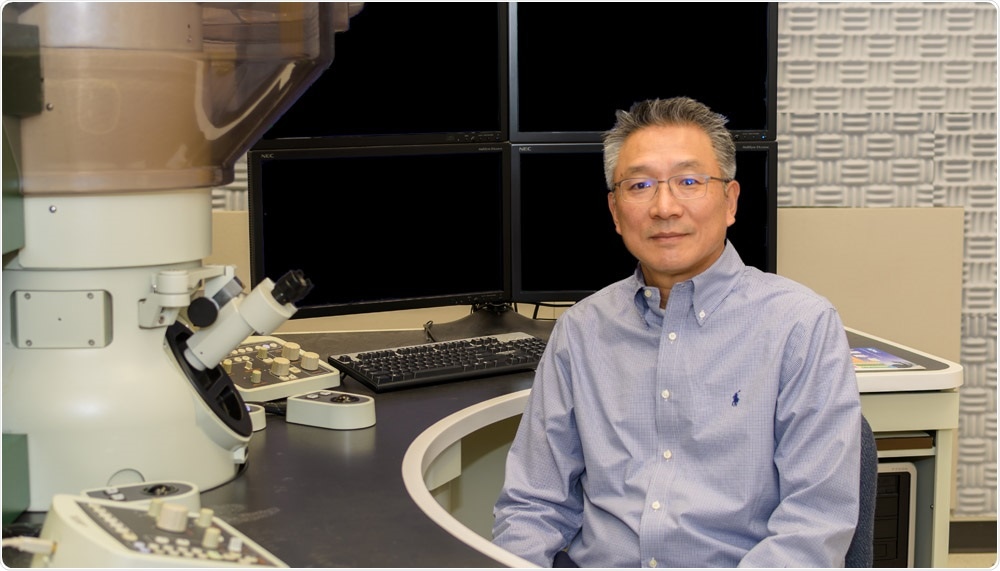Nanopore technology has the potential to enable the development of portable, low-cost, small devices capable of real-time DNA sequencing. However, one of the obstacles has been to improve the technology’s accuracy.

Dr Moon Kim, the Louis Beecherl Jr Distinguished Professor in the Erik Jonsson School of Engineering and Computer Science, and fellow researchers developed a nanopore sequencing platform that, for the first time, can detect the presence of nucleobases, the building blocks of DNA and RNA. Image Credit: The University of Texas at Dallas.
A research team from The University of Texas at Dallas has made strides toward this aim by creating a nanopore sequencing tool that can identify the existence of nucleobases, the building blocks of RNA and DNA, for the first time. The research was published online on February 11th, 2021, and featured on the back cover of the journal Electrophoresis in the April print edition.
By enabling us to detect the presence of nucleobases, our platform can help improve the sensitivity of nanopore sequencing.”
Dr Moon Kim, Louis Beecherl Jr Distinguished Professor, Erik Jonsson School of Engineering and Computer Science, The University of Texas at Dallas
Most DNA sequencing is currently performed in the lab using fluorescent dye to prepare samples and lasers to determine the order of the four nucleobases, the basic units of the genetic code: thymine (T), cytosine (C), adenine (A), and guanine (G). When illuminated, each nucleobase emits a different wavelength, enabling researchers to find the sequence.
Nanopore sequencing involves uncoiling a DNA sample and feeding the hairlike strand through a nanopore or tiny hole, essentially in a constructed membrane. The DNA strand disrupts the electrical current passing through the membrane as it passes through the nanopore. The current behaves differently depending on the characteristics of a DNA molecule, for example, its shape and size.
The electrical signal changes as the DNA moves through the nanopore,” Kim said. “We can read the characteristics of the DNA by monitoring the signal.”
Dr Moon Kim, Louis Beecherl Jr Distinguished Professor, Erik Jonsson School of Engineering and Computer Science
The difficulty in monitoring the speed of the DNA strand as it passes across the nanopore has been one of the obstacles in progressing nanopore sequencing.
The UT Dallas team addressed this by creating an atomically thin solid-state—or nonbiological—membrane filled with water, titanium dioxide, and an ionic liquid to limit the speed of molecules across the membrane. Water was applied to the liquid solution to increase the amplitude of the electrical signals, which makes them easier to decipher.
For the researchers, the next step would be to improve the platform’s ability to easily identify each nucleobase. According to Kim, the platform also allows for the sequencing of other biomolecules.
“The ultimate goal is to have a hand-held DNA sequencing device that is fast, accurate and can be used anywhere. This would reduce the cost of DNA sequencing and make it more accessible,” concluded Kim.
Source:
Journal reference:
Novotný, T & Gaš, B (2021) Mathematical model of electromigration allowing the deviation from electroneutrality. Electrophoresis. doi.org/10.1002/elps.202000207.